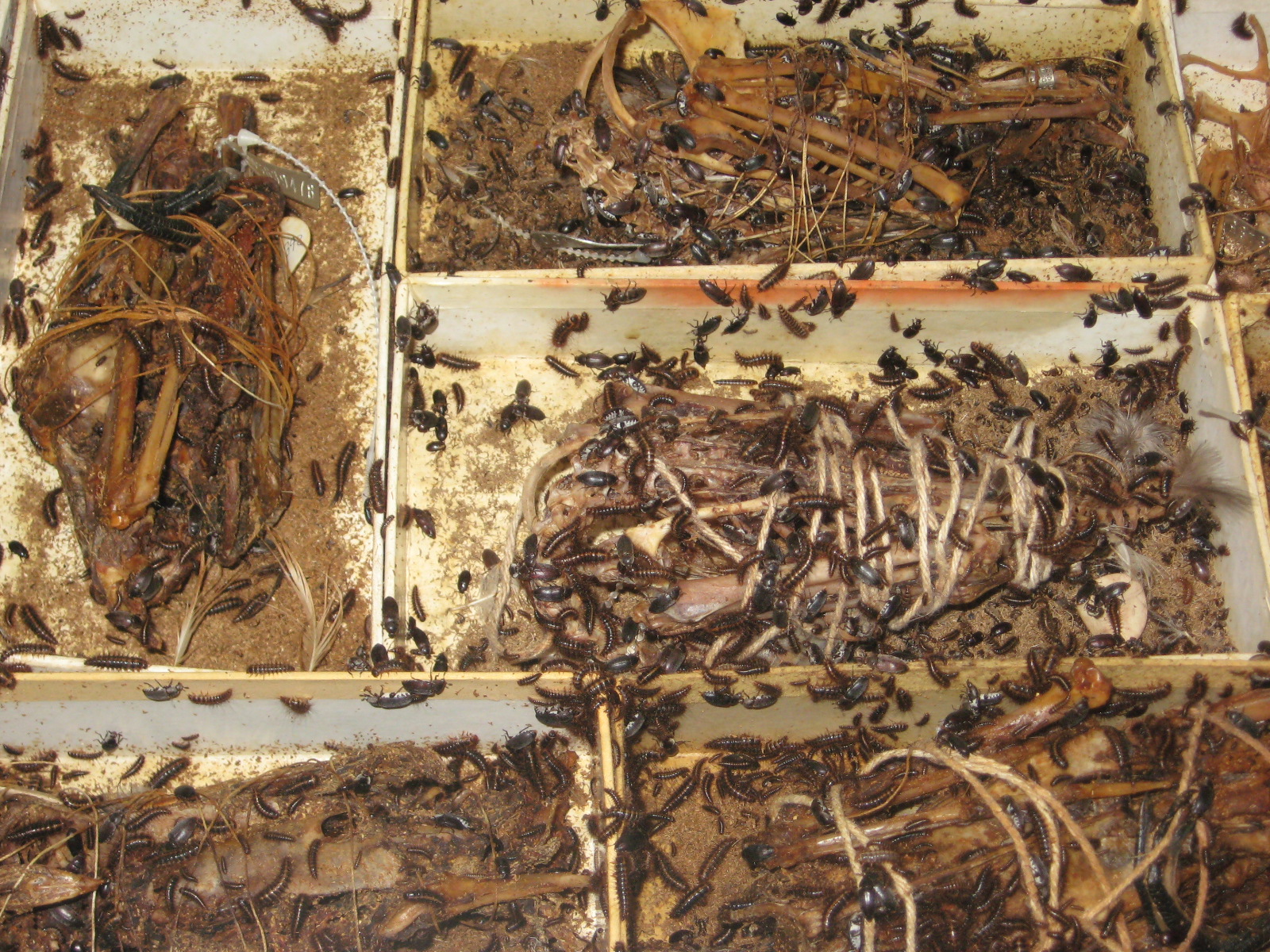Why Are Museum Specimens Bugged?
/https://tf-cmsv2-smithsonianmag-media.s3.amazonaws.com/filer/oskosy_office.jpg)
The dead watch from glass bottles as John Ososky strips the flesh off yet another bird. A shorebird, he thinks, though he's a museum specialist, not an ornithologist.
Ososky sits at a sink in the Smithsonian's osteology laboratory in Suitland, Maryland, where animals are reduced to their skeletal frames for scientific research and education. Surrounded by a gorilla skull and the complete vertebrae of a Burmese python, Ososky keeps the water running as he scrapes the shorebird's leg bone with a scalpel.
Ososky, 52 and with the Smithsonian for nearly 11 years, prepares 1,000 birds annually for the Institution. Curators gather the specimens during their travels and hand them, skinned and wrapped in plastic bags, to Ososky. He then takes these lifeless lumps of flesh and transforms them into the skeletons that museum visitors might see on display at the National Museum of Natural History. For this part, Ososky has tens of thousands of assistants.
In most cases, a researcher would use a chemical to burn off an animal's flesh. Dab it on and you've got a clean skeleton in a few days or weeks. However, bird skeletons are so tiny and fragile that chemicals damage the bones, destroying the specimen's scientific value. The solution is to clean the bones naturally with insects called dermestid beetles.
The "beetle chamber" is located in a plain government-issue building behind the lab. When Ososky opens the door, the smell of insect dung is striking. In 2002, a Washington Post journalist described the odor as "sickly sweet." Ososky doesn't even notice the smell anymore that always gets into his clothes by the end of the day. There's a washing machine and dryer on premises just so he doesn't have to bring his work home.
Ososky checks on the progress the beetles are making. He lifts the cover of a tank full of birds. The beetles don't seem to have an appetite this week. He picks up a spray bottle of ammonia and sprinkles the carcasses. In moments, hundreds, if not thousands, of the beetles emerge from hiding. It's like New York City at lunch hour.
After the beetles have their fill, Ososky brings the specimens back to the lab where they are cleaned, dried, and entered into the collection. Despite the sights and smells, Ososky loves his job and has no intention of leaving before retirement. He says, working with dead animals each day gives him an appreciation for death and it's place in nature. "I'd love it, when I go, to be bugged and put in the collection," he jokes.
/https://tf-cmsv2-smithsonianmag-media.s3.amazonaws.com/accounts/headshot/joseph-caputo-240.jpg)

/https://tf-cmsv2-smithsonianmag-media.s3.amazonaws.com/accounts/headshot/joseph-caputo-240.jpg)